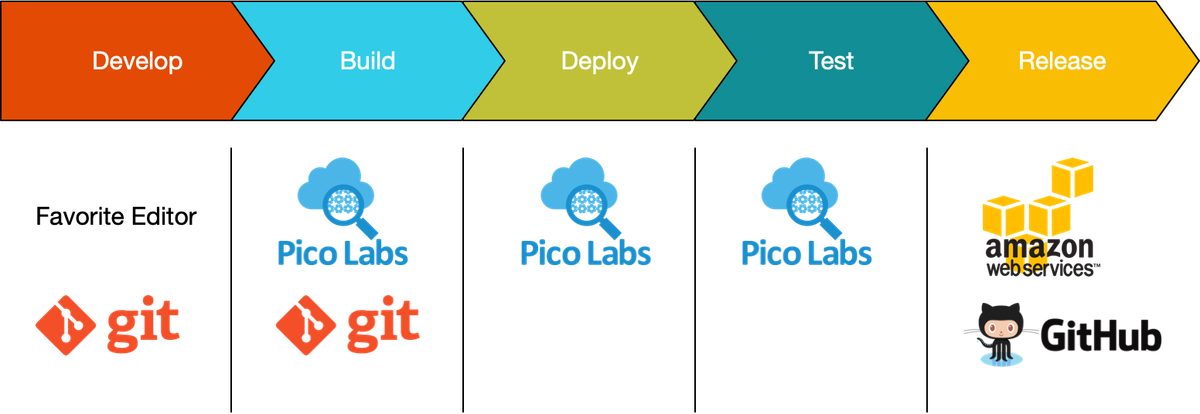The following is a suggested workflow for new Pico developers. Related information is available in the following resources:
Programming involves a collection of tools, often referred to as the "tool chain" since they are used more or less in sequence. Here's a graphical representation of the tool chain for programming picos, noting each stage. We'll use this to organize the remainder of this document.
...
Develop
To develop KRL for picos, you can use Git (or another versioning tool) and your favorite editor. There are old plug ins for several popular editors.
Create a directory for your project
Code Block language bash $ mkdir myproject $ cd myproject/
Initialize the project directory as a Git repository
Code Block language bash $ git init
Create a KRL ruleset as a file in the repository using your favorite editor. There may be a KRL plugin for your editor.
Build
The build process for rulesets primarily involves editing them and then parsing them to ensure they are correctly formatted. The preferred way to ensure they parse is using a Git pre-commit hook.
Follow the directions in Setting Up a Git Pre-Commit Hook to Parse KRL to set up the KRL parser and ensure that KRL files are parsed before they are committed.
Add the file to the repository and commit it.
Code Block language bash $ git add hello_world.krl $ git commit -a -m "initial commit" All rulessets parse [master (root-commit) 4a2f95c] initial commit 1 file changed, 34 insertions(+) create mode 100644 hello_world.krl
With the pre-commit hook in place, you're assured that there are no parse errors in your ruleset if it commits.
Deploy
Deploying consists of installing the ruleset in any picos it needs to run in. If the ruleset has already been installed, then it will just need to be flushed.
...
Once the ruleset is installed, it will show up in the Installed Rulesets section of this page.
Flushing
Because the engine compiles and caches the ruleset, whenever you make changes to the source, you need to flush the ruleset. For development and testing, you can do that manually from the Installed Rulesets section of the develop interface.
...
This will flush the ruleset for all picos on this instance of the pico-engine. The hash will change with each new version of the file and is unique for every version of the file.
If you have not parsed your rulesets when you commit them (as described above) then the developer interface will show you any errors when you install or flush the ruleset.
Test
The developer interface includes support for testing your rulesets. See the detailed instructions for more information on how to configure and use that feature.
...
